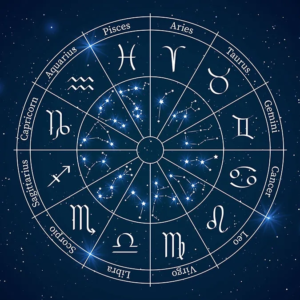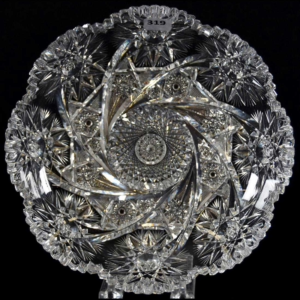Pegmatite stone – properties, virtues & benefits
Pegmatite stone is a crystalline magmatic rock distinguished by its large crystals. It is often associated with deposits of rare and precious minerals such as quartz, feldspar and mica. Discover the characteristics and uses of this stone in our guide.
PEGMATITE CHARACTERISTICS
- Chakra: Crown, throat.
- Properties: Soothing, balancing, harmonizing.
- Astrology: JuPiter.
- Zodiac: Sagittarius.
- Elements: Earth.
- Colors: White, gray, pale Pink.
- Hardness: 6 – 7 on the Mohs scale.
- Chemical Formula: Varies according to mineral composition, generally from the silicate family.
- Associated god: None.
PEGMATITE – ITS HISTORY
Pegmatite is a complex mineral composed of various minerals, including mica, and stone crystals known as “written granite”. This variety of pegmatite is the most famous and widespread. Geologists have discovered other types of pegmatite with different arrangements and have called them by the same name. Granitic massifs are characterized by lenses and veins formed when rocks cool or interact with certain underground structures, including rock-saturated water veins. Scientists have yet to reach a consensus on the formation of pegmatites. Some variants of pegmatitic gems, such as Jew’s Stone, Graphite and Professor’s Stone, are not used for jewelry. The graphism of this mineral is similar to Hebrew script, but can also be compared to the form of Egyptian and cuneiform runes or Arabic script. This is why this stone is also known as the “teacher’s stone” or “Jewish stone”.
The graphic variety of pegmatite is often used to make amulets, earrings, rings, boxes and other jewelry. However, those who appreciate the stone’s beauty may also find it magnificent, regardless of its price. The pegmatite studied here has properties that set it apart from other stones. It is considered a sacred stone by many civilizations, such as the Scandinavians, Egyptians, Christians, Arabs, Indians and people living in northern Russia. The stone’s graphic patterns are similar to those seen on this mineral. Students and teachers consider this stone a talisman, while others believe it brings good luck.
PEGMATITE STONE – ITS ORIGIN AND COMPOSITION
The term “pegmatite” comes from the Greek “pegma”, meaning “assembled and coagulated”. It’s a magmatic rock composed of large crystals, measuring over a centimeter and up to several meters. Most pegmatites resemble a combination of granite, containing minerals such as mica, white potassium feldspar and quartz. Although there are no magic minerals in these stones, they contain hydrothermal fluids from the intrusion of latest magmas different from granitic plutons. Pegmatites are composed of incompatible and rare elements, such as No, Li, Cs, Zi, B, Be, F, Sn, Nb, Ta, U, among others.
Pegmatitic minerals form vein or pocket veins close to forming granitic plutons. The abundance of water facilitates the diffusion of chemical elements and the raPid growth of crystals. Graphite variants are a particular form of pegmatite, characterized by the simultaneous crystallization of feldspar and quartz. The quartz patches are wedge-shaped and isolated, but form a single crystal in the white feldspar lattice. The pœcilitic structure results from the inter-growth of these minerals.

PEGMATITE – VERTUS ET PROPRIÉTÉS
The pegmatite stone shown here may have clear designs or lines, but whatever its pattern, it is beneficial for those who thirst for knowledge and for those who wish to teach others. That’s why it’s considered a teacher’s stone. This stone can be used to pass school tests, including exams, and to help students learn their lessons. It can also be used to find insPiration and facilitate letter writing. The stone can be carried in a pocket or in jewelry to reduce stress and promote concentration. It is often recommended as a sedative before a test, exam or competition.
According to esotericists, this stone shines when associated with certain zodiac signs, and is ideally suited to people born under the sign of Virgo. This stone also has well-known medicinal properties. Although granite is not generally used in lithotherapy, it is widely studied in geology.

PEGMATITE STONE – CLEAN AND RECHARGE
To clean and recharge a pegmatite stone, you can follow these steps:
Cleaning:
- Soak the pegmatite stone in salted distilled water for a few hours to eliminate any negative energies it has absorbed.
- Rinse the stone thoroughly under running water to remove any salt residue.
- Gently dry the stone with a soft cloth.
Loading:
- Place the pegmatite stone in the sun for a few hours to recharge it with solar energy.
- You can also place it on a cluster of crystals, such as a quartz geode, for a few hours to recharge it with natural energy.
- Use your intention to recharge the stone with positive energy by holding it in your hands and visualizing golden white light surrounding it.
It’s important to clean and recharge your stones regularly to maintain their properties and effectiveness.
WHERE DOES THE NAME PEGMATITE COME FROM?
The term “pegmatite” comes from the ancient Greek “pegma”, meaning “assemblage”. The name refers to the texture of the rock, which consists of an assemblage of large crystals. Pegmatites are intrusive magmatic rocks formed by the slow, deep crystallization of magma. Due to their formation process, pegmatites often contain rare and valuable minerals, making them important sources of minerals for industry and jewelry.
WHICH CHAKRA DOES PEGMATITE ACT ON?
The pegmatite stone acts mainly on two chakras, namely the crown chakra and the throat chakra.
The crown chakra is located at the top of the head and is associated with sPirituality, wisdom and connection with the universe. Pegmatite can help stimulate this chakra by promoting meditation, mental clarity and open consciousness.
The throat chakra is located at the level of the throat and is associated with communication, self-expression and listening. Pegmatite can help balance this chakra by promoting clear communication, self-expression and active listening.
WHICH ASTROLOGICAL SIGN IS ASSOCIATED WITH PEGMATITE?
The astrological sign associated with pegmatite stone is Sagittarius. Sagittarius is the ninth sign of the zodiac and is associated with people born between November 22 and December 21. Sagittarius natives are often described as adventurous, optimistic and in search of wisdom and knowledge. Pegmatite can help support the positive qualities associated with this sign by stimulating the crown chakra and promoting mental clarity, meditation and open awareness.
PEGMATITE STONE SUMMARY
Pegmatite stone is an intrusive magmatic rock, composed mainly of feldspar, quartz and mica crystals. It forms from water-rich magma, which cools slowly and allows large crystals to grow. Because of its mineralogical composition, pegmatite is often associated with deposits of rare and precious minerals such as lithium, tantalum, niobium and beryllium. It is also used in the manufacture of jewelry, optical glass and ceramics due to its unique properties, such as hardness and heat resistance.

